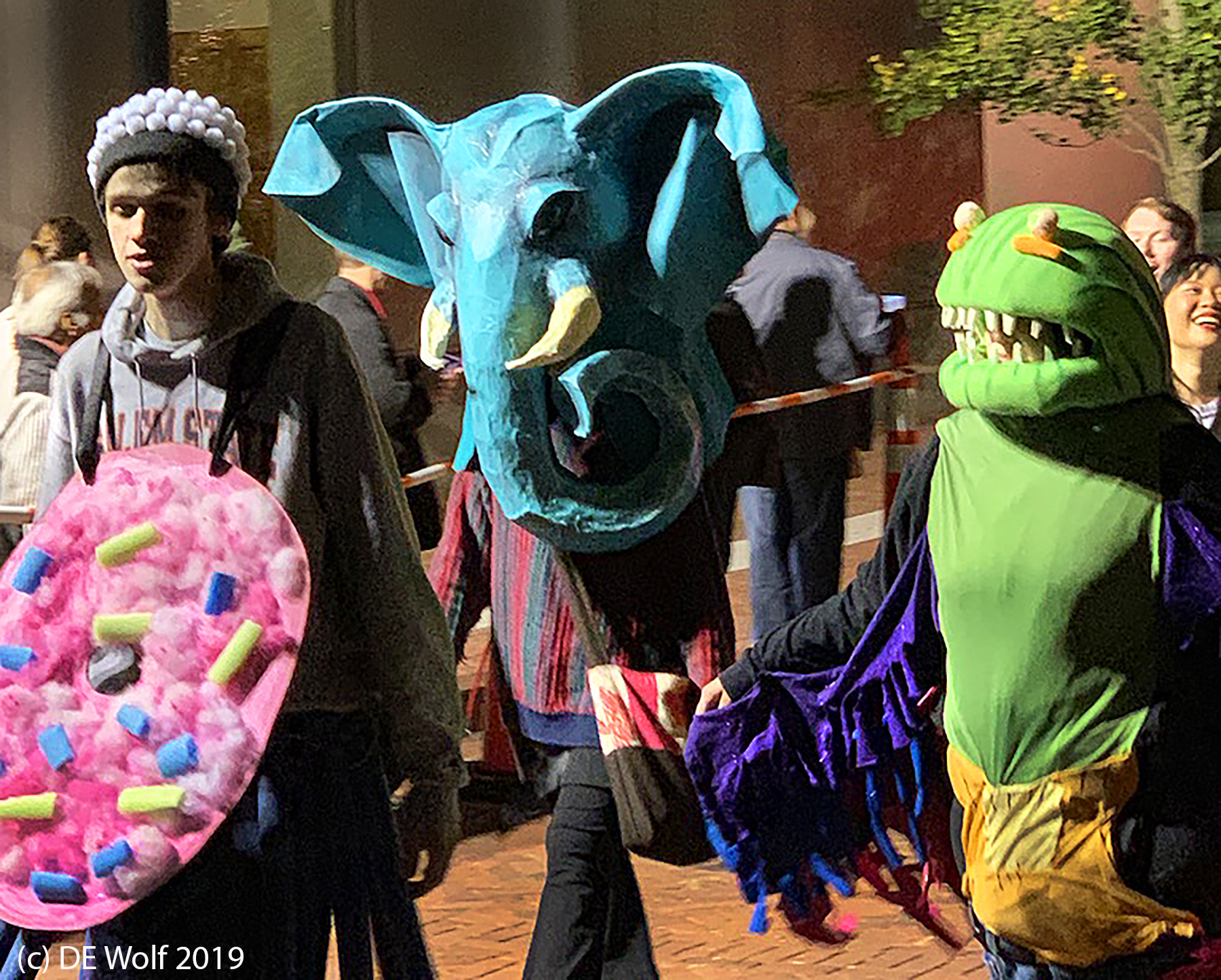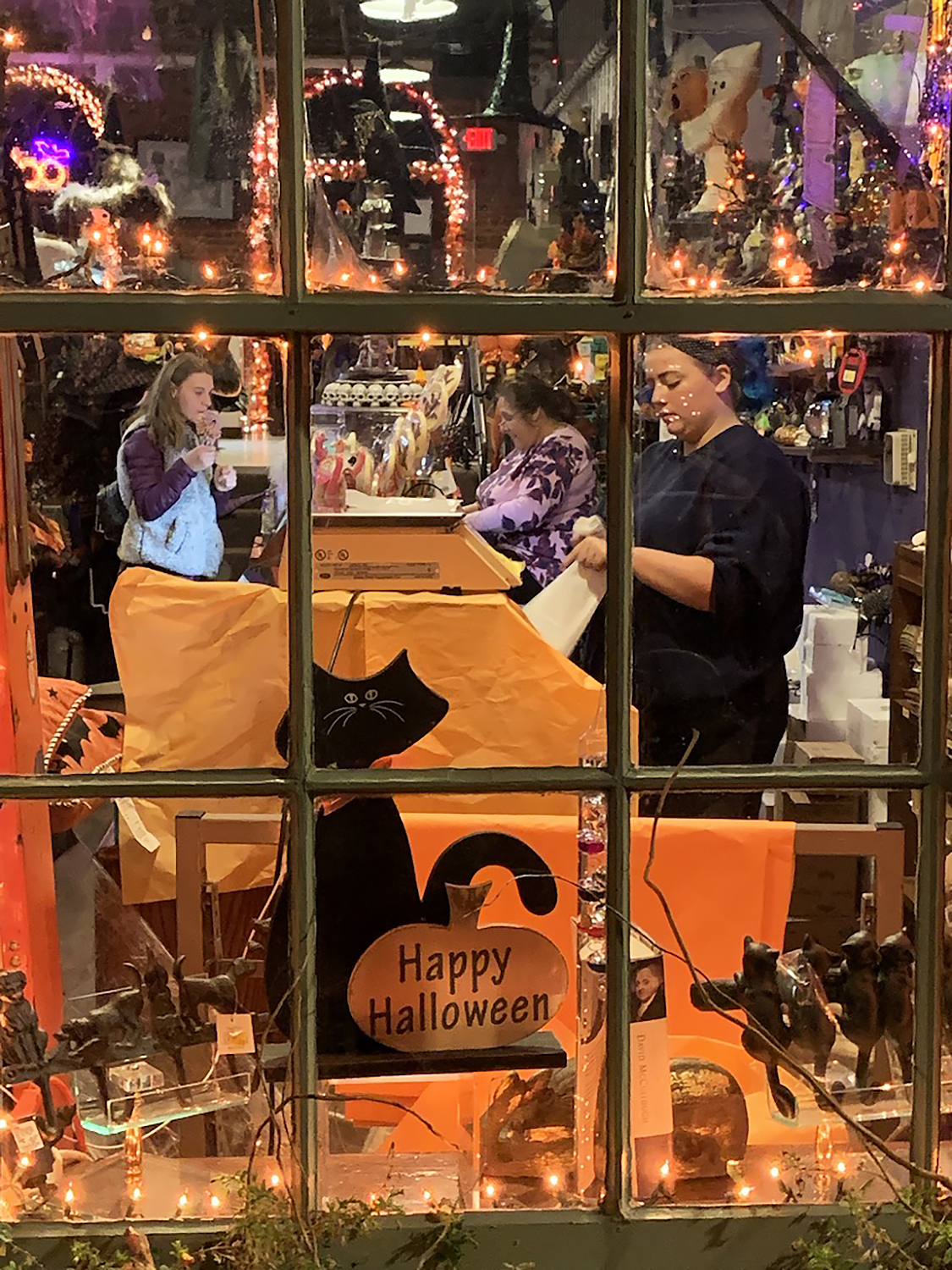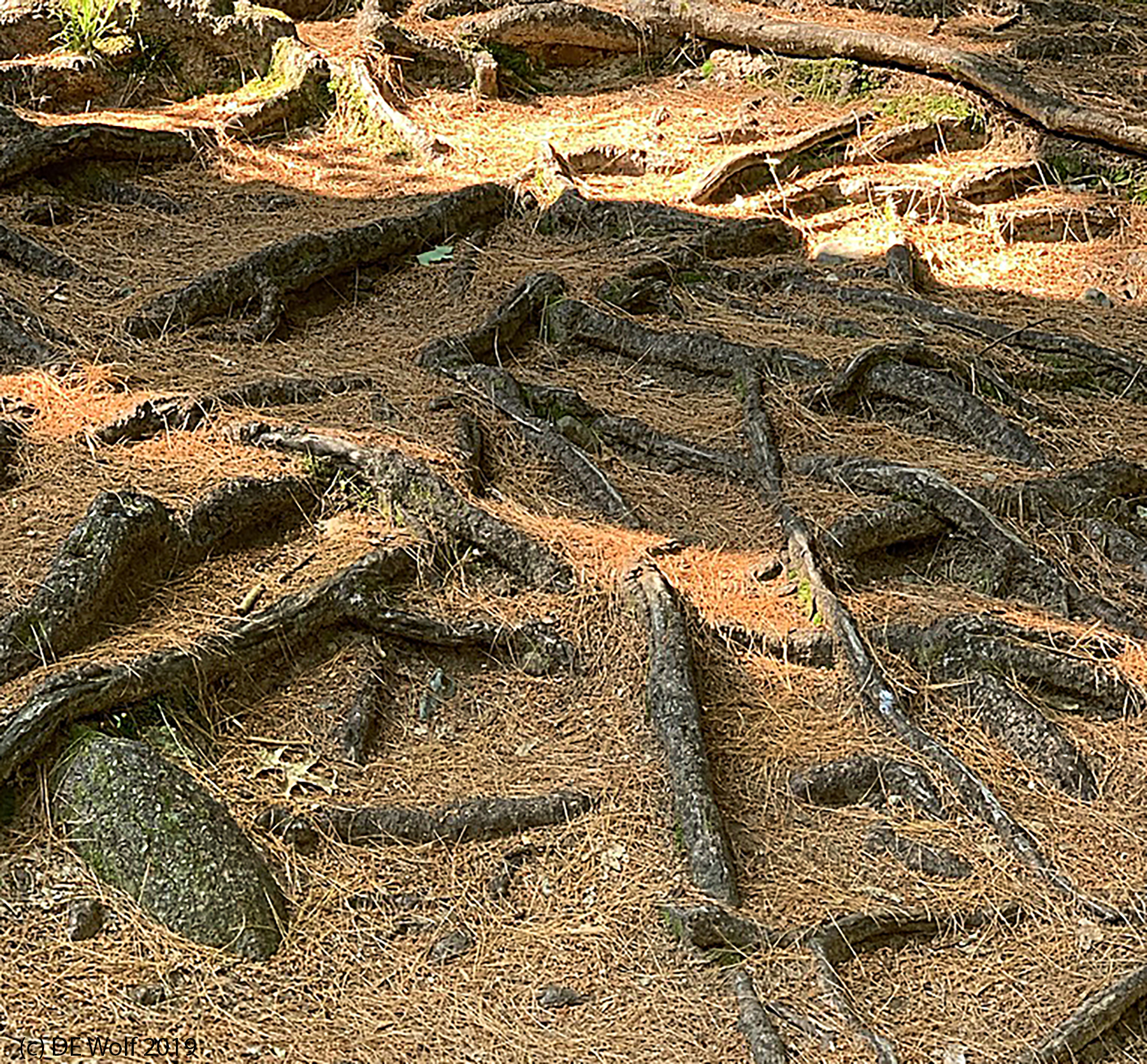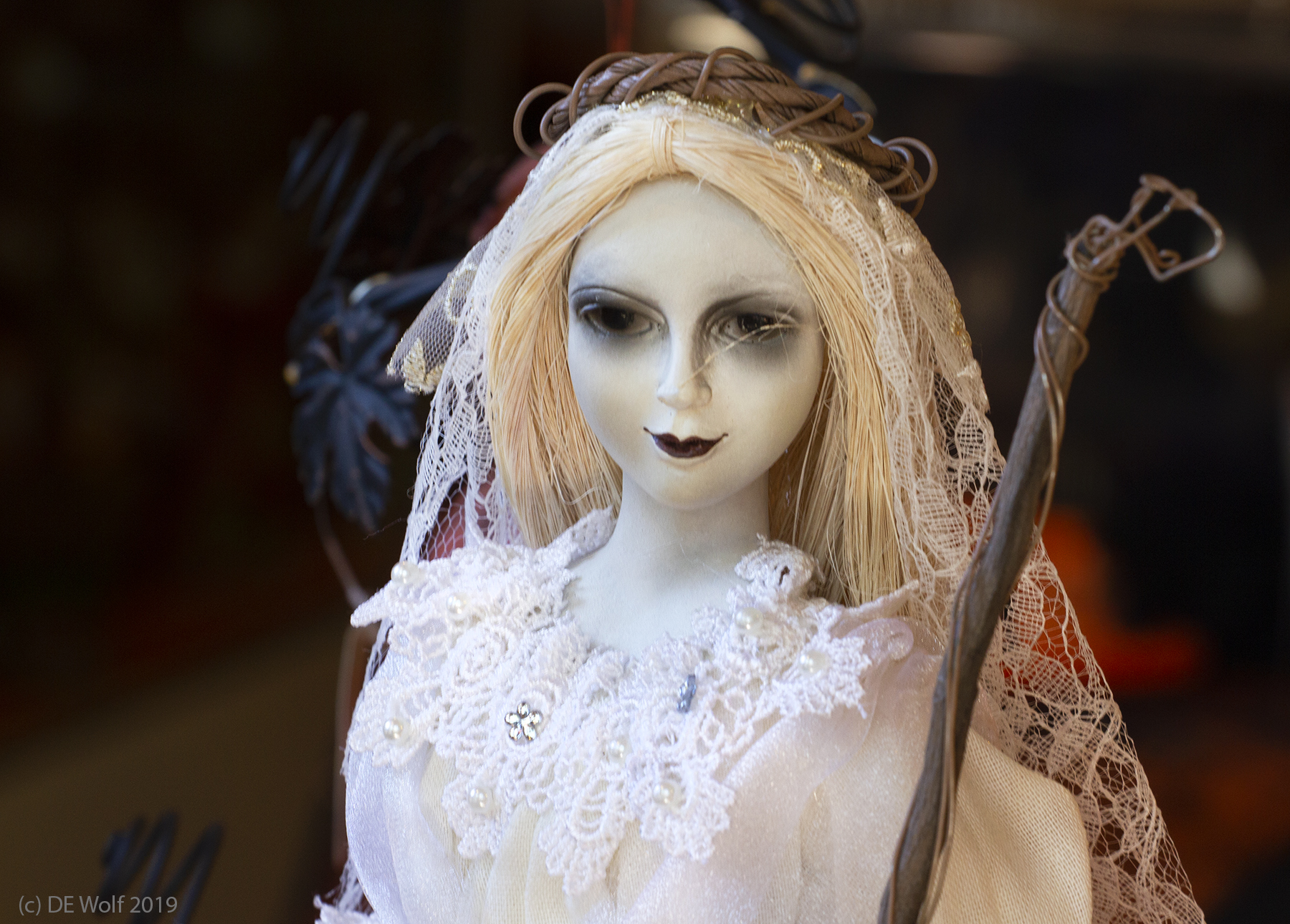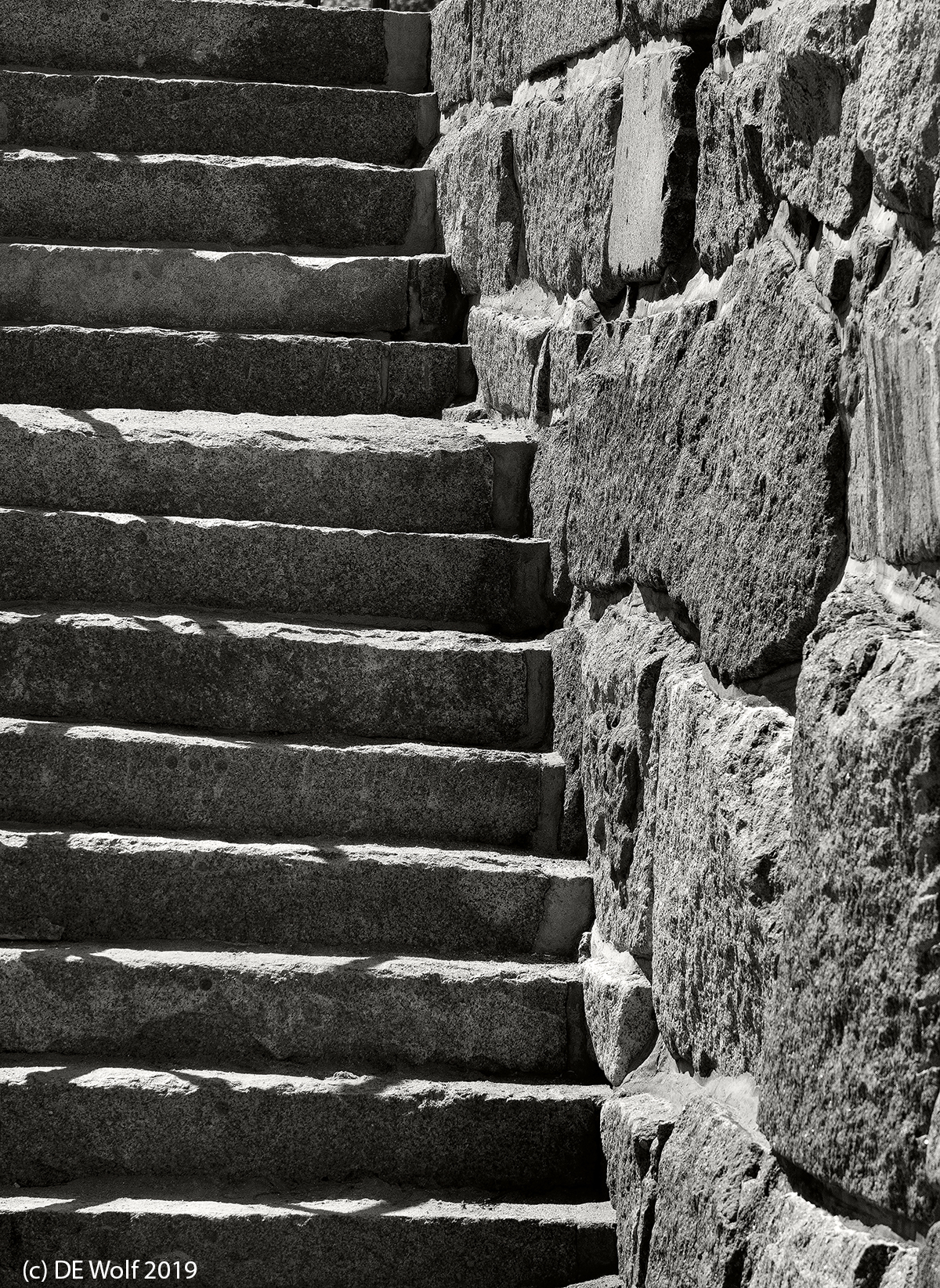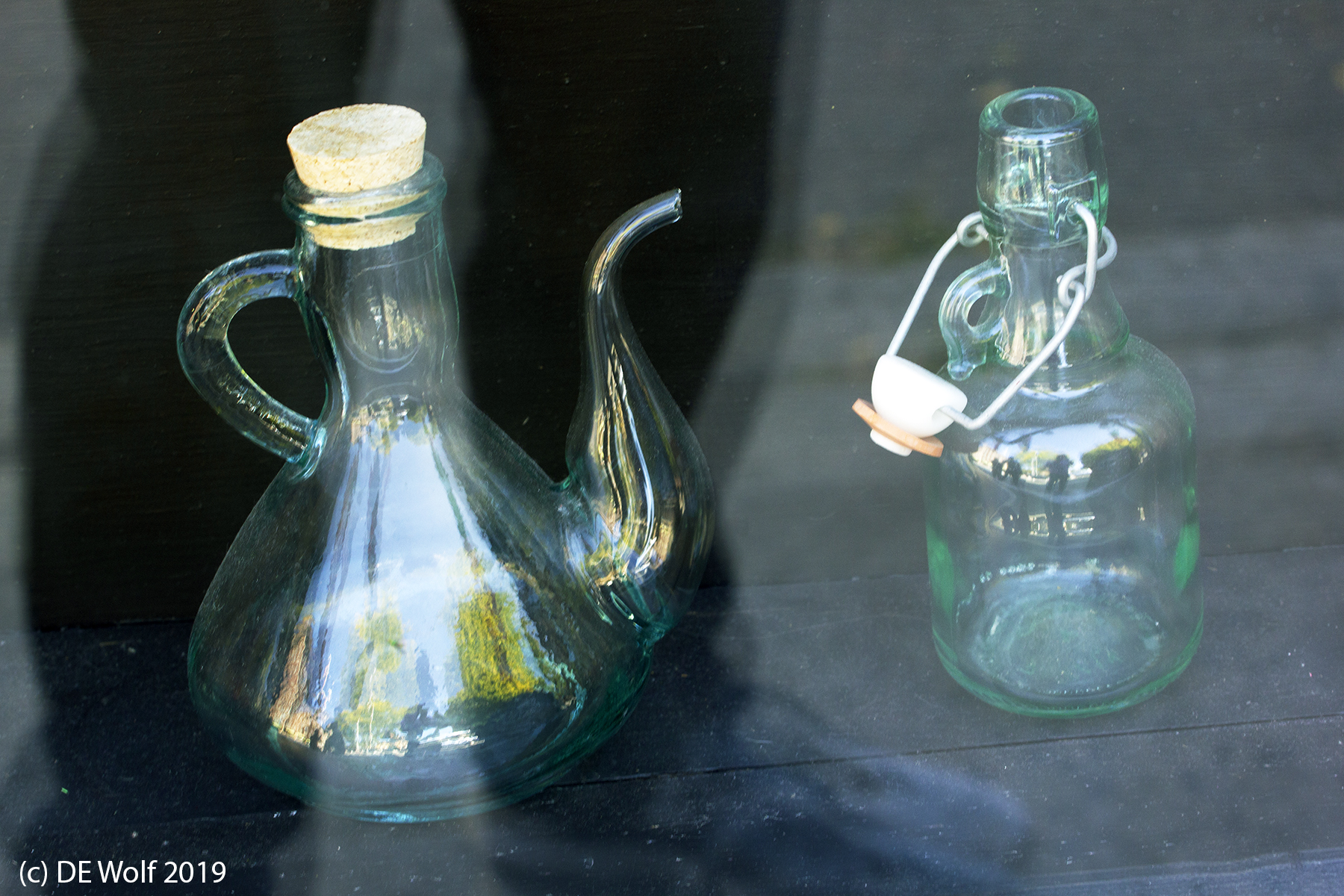The image of Figure 1 is another from last Thursday’s Salem Halloween parade. The blue elephant man with his striped sweater is what attracted me to this group. An elephant, a bat, and a cookie. Not sure what to make of this last figure. Perhaps he is dressed as a quid pro quo! This particular image was shot in front of the well-lit Peabody Essex Museum, and so there was little problem with the exposure. I was most attracted by the variety and intensity of color. I had thought to take the image into PRISMA and stylize it, but decided in the end that it was incongruous enough due to its composition – almost like a comic book.
Category Archives: Personal Photographic Wanderings
The Halloween parade 2019
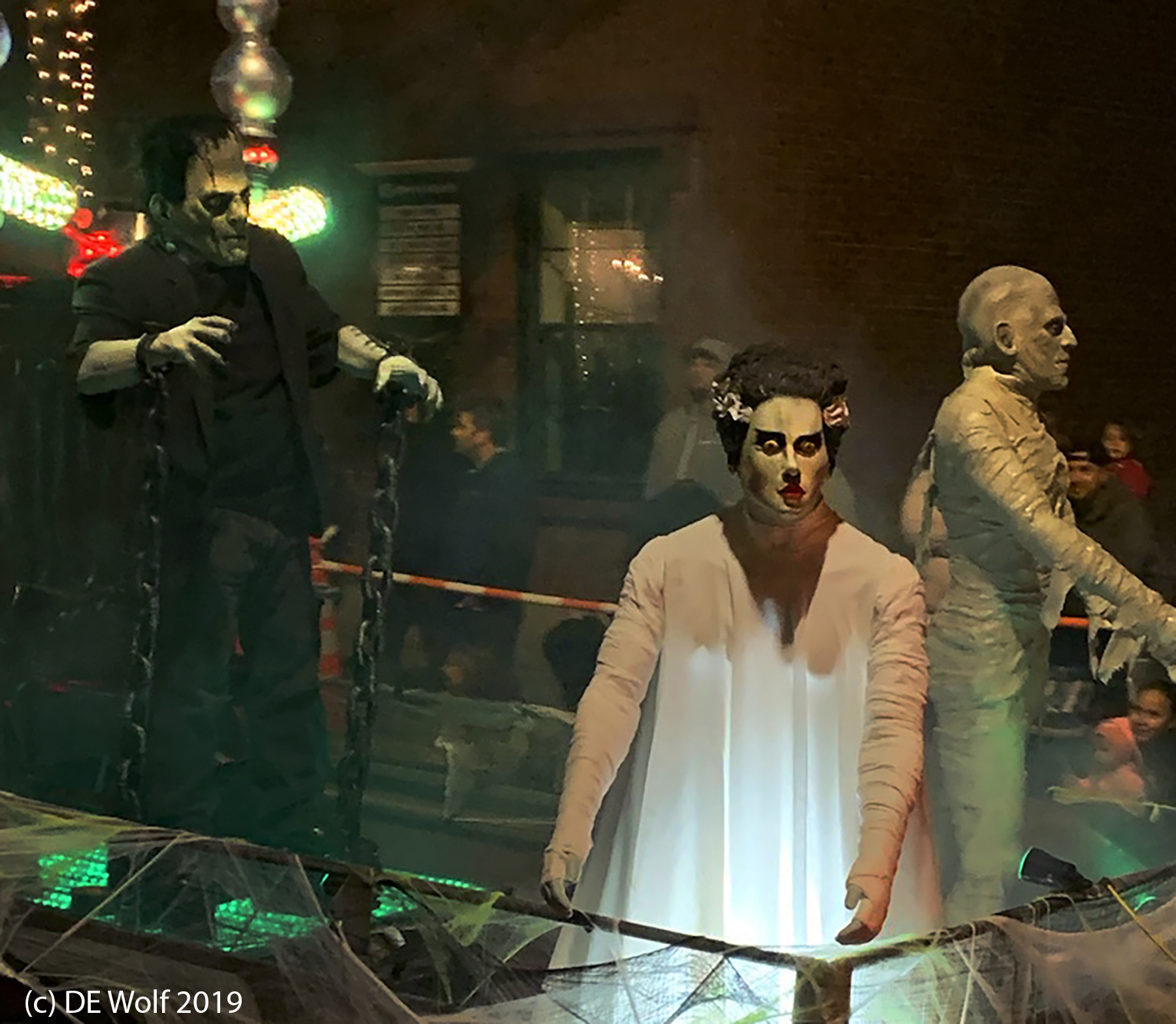
Figure 1 – The Bride of Frankenstein, her hubby, and her mummy, Salem Halloween Parade 2019. (c) DE Wolf 2019.
As I said, almost all of the photographs that I took of this year’s Salem Halloween Parade were taken with my iPhone XS. Photography is one great learning experience, and available light night photography can be so humbling. In Figure 1 I was interested in the green tones, the lighting of The Bride of Frankenstein’s dress, and the artificial fog on this float. Successful? The parade was great fun, and this truly gives the flavor.
Halloween begins
Well, Salem is Halloween, and last night it all kicked off with a giant parade. Photography was trickier than I expected. I might as well have left my DSLR at home, despite ISO 6400. So I left it cumbersomely hanging from my neck and switched to my iPhone XS, which had its own set of problems. As a result, I took the approach of snapping as many images as I could, in the hope that I would capture something good. Over the next few days I will post a few images. But to begin with, I will note that the shops are all decorated for the big month and this particular shop, “Maria’s Sweet Somethings” is offering up all sorts of goodies. “Trick or Treat, everyone!”
Dulce et decorum est pro patria mori
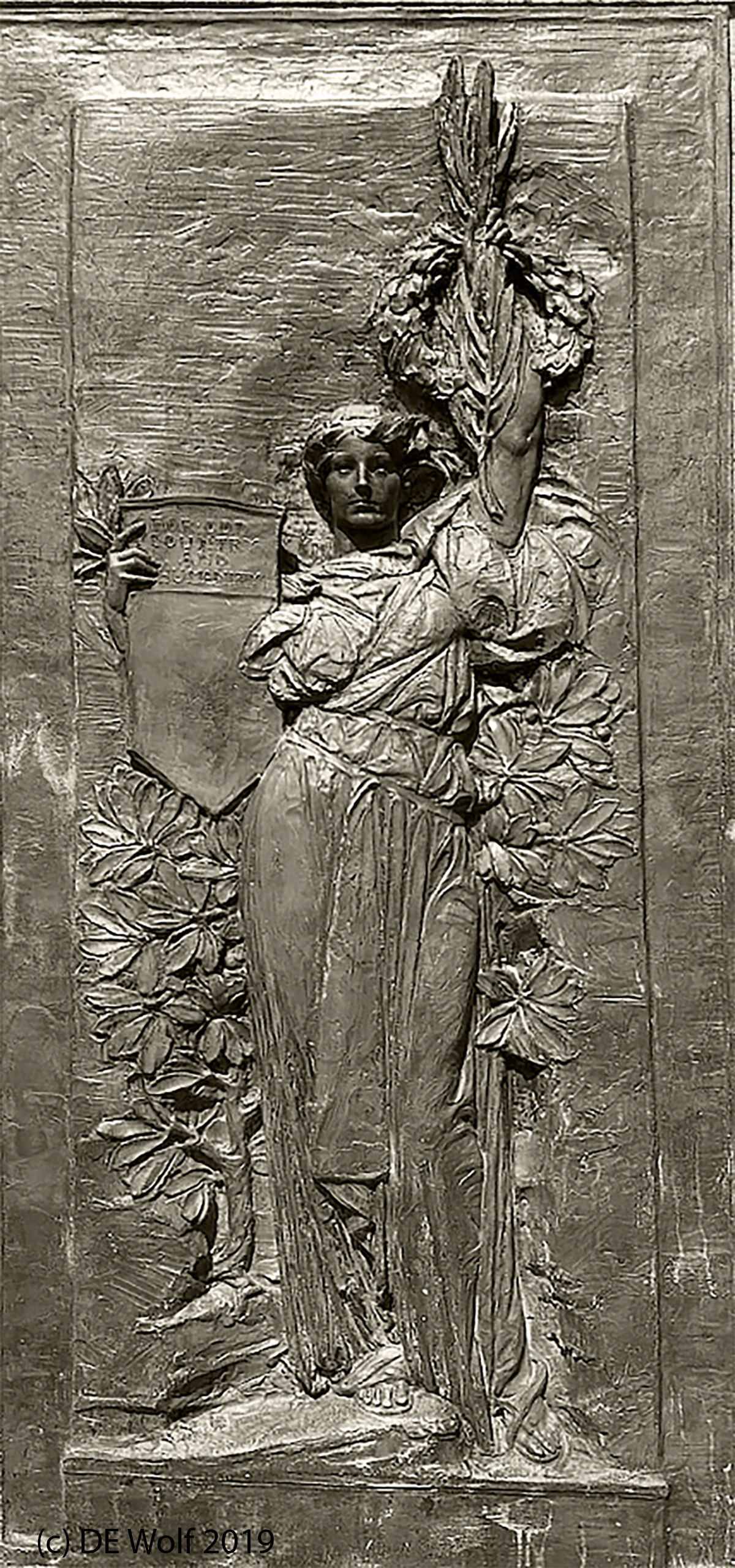
Figure 1 – Memorial to the men of Salem’s Immaculate Conception Parish who served in World War 1. (c) DE Wolf 2019.
The other day, while I was exploring my new city, Salem, I found the spectacular bronze relief of Figure 1. It is a monument to the boys of the Immaculate Conception Parish who served in “The World War.” That is back when there was only one such war and the world was filled with hope that it would be the last.
The memorial is gorgeous, and I was curious about two things: first who was the sculptor, second how well did the latest Adobe Photoshop tilt perspective tool work. I think that as the photograph testifies that the tool works very well. The sculptor was Raymond Averill Porter. He was born in 1883 and attended age Studied School of The Art Institute of Chicago Chicago, 1902-1904. He went on to become the Head of the department of modeling and sculpture at the Massachusetts School of Art. He is best known for his bronze statue of Senator Henry Cabot Lodge (1850 – 1924) in front of the Massachusetts State House.
The monument is a piece of beauty and peace. The setting is serene. Are the horrors of that war, after a century forgotten? My mind flashes to the immortal words of Wilfred Owen (1893 – 1918) who died a week before the guns went silent on the Western Front.
Animal Faces #12 – Lucky
I have achieved another animal photograph that I believe is worthy of being in the “Animal Faces” series. You may remember that the goal is to look into the animal’s eyes and see their soul. And Figure I of a friend’s bichon frise named “Lucky” truly fits that bill. Lucky is a rescue dog, and I have to tell you, without going into the troubling details, that he is truly “Lucky.” True to his breed he returns and literally exudes love! Perhaps its is also worth mentioning that Lucky is a philosopher. He spends much of his time contemplating the meaning of reality as any worthy philosopher.
I toyed with departing from the use of black and white here. But decided in the end to stay obedient to the original goals of the project. And of course, this and many other images of Lucky were taken with my iPhone XS. Of course also, what makes the image in my mind is the subtle selenium tone!
Surface roots in the pine barren
Some trees, I am told, have surface roots, and these are the bane of lawn mowers. Yet in a sense they seem magical. In one sense they are suggestive of a massive root system. They give us a glimpse of what lies beneath, both on a physical and a mythical plane. In another, they seem poised somewhere between this world and the subterranean world. Trees, of course, connect the three world domains heaven, earth, and underworld. A large part of their magic appeal relates to stories of the world tree that in so many mythologies is the Axis Mundi.
Do you think of this when you trip over a root that you didn’t expect on a morning’s hike through the forest? Was it put there by some troll to ensnare you? I would never deny that there is always a heightened sense of the mystic when I walk in the woods. In the words of Steven Sondheim:
“Anything can happen in the woods
May I kiss you?
Any moment we could be crushed.”
Skadi, the Norse goddess of winter
On a bright September morning Skadi, the Norse goddess of Winter, is the last person or deity that you expect to run into. But this is Salem, MA after all and it is getting on towards Halloween and the Day of the Dead, which are celebrated here for the entirety of the month of October. I encountered the doll of Figure1 in a shop and fell in love with the face, gown, and light, not the least of which for me was the bokeh of the background.
The myth of Skadi is intriguing. She is a jötunn (an ice giant) and a goddess, who is associated with bowhunting, skiing, winter, and mountains. In a sense, she is the Artemis of cold weather. She is revealed to us in the Poetic Edda, compiled in the 13th century. Compiled significantly from earlier from earlier sources such as the Prose Edda and in Heimskringla, also written in the 13th century by Snorri Sturluson. Skaldi was initially married to the god Njörðr but they become divorced because Njörðr could not deal with the cold of Skaldi’s world. She then marries the god Odin and bears many children with him. Importantly, it is Skaldi who places a poisonous serpent to drip venom continuously on Loki. In marital devotion Loki’s wife Sigyn catches the venom in a bowl and it is only when the bowl becomes full and Sigyn must empty it that the venom drips agonizingly into Loki’s eyes. This, of course, figures prominently in the Norse end of the world myth, the Gotterdammerung or fall of the Gods and the coming of the Ragnarok.
Less romantically Skadi is the origin of the the Snow Queen in the Disney movie, Frozen.
Canon T2i with EF 70-200mm f/4.0 L USM Lens at 104 mm, ISO 400, Aperture Priority AE Mode, 1/15th sec at f/8.0.
The stairs from the sea
So far we are having a truly wonderful September light, and I took the image of Figure 1 in Gloucester, MA last weekend looking up the stairs from the beach at Stage Fort Park. On the one hand this is meant as a simple geometric study taken in an intense fall light – a chance to practice a black and white photographic art and to lovingly and magically give it a subtle sepia tone. This recalls the best moment in analog printing, when, with lights on, you bathed the print in selenium toner and watched with growing anticipation for that magic moment of perfection. It was all so like baking a cake! But at another level there is the sense that stairways always give of climbing up metaphysically to a higher plane. Often when you walk along a difficult path you wonder about the people that hewed the path from nature’s grasp, here a sea wall and a place to climb out of it.
Canon T2i with EF 70-200 mm f/4.0 USM L Lens at 98 mm, Aperature Priority AE Mode, ISO 400, 1/1000th sec at f/8.0.
Glass through glass
I was out with my camera this morning when my attention was drawn to two glass bottles in a storefront window. The window was dirty and there was a lot of glare. But I decided that the glare added a degree of the etherial to the image, as if the bottles weren’t quite settled or rooted in space. The result, after a little processing, is the image of Figure 1. It seems to be as if the bottles are almost floating in free space.
Canon T2i with EF70-200mm L USM Lens at 70 mm, ISO 400, Aperture Priority AE mode, 1/20th sec at f/7.1 with no exposure compensation.

